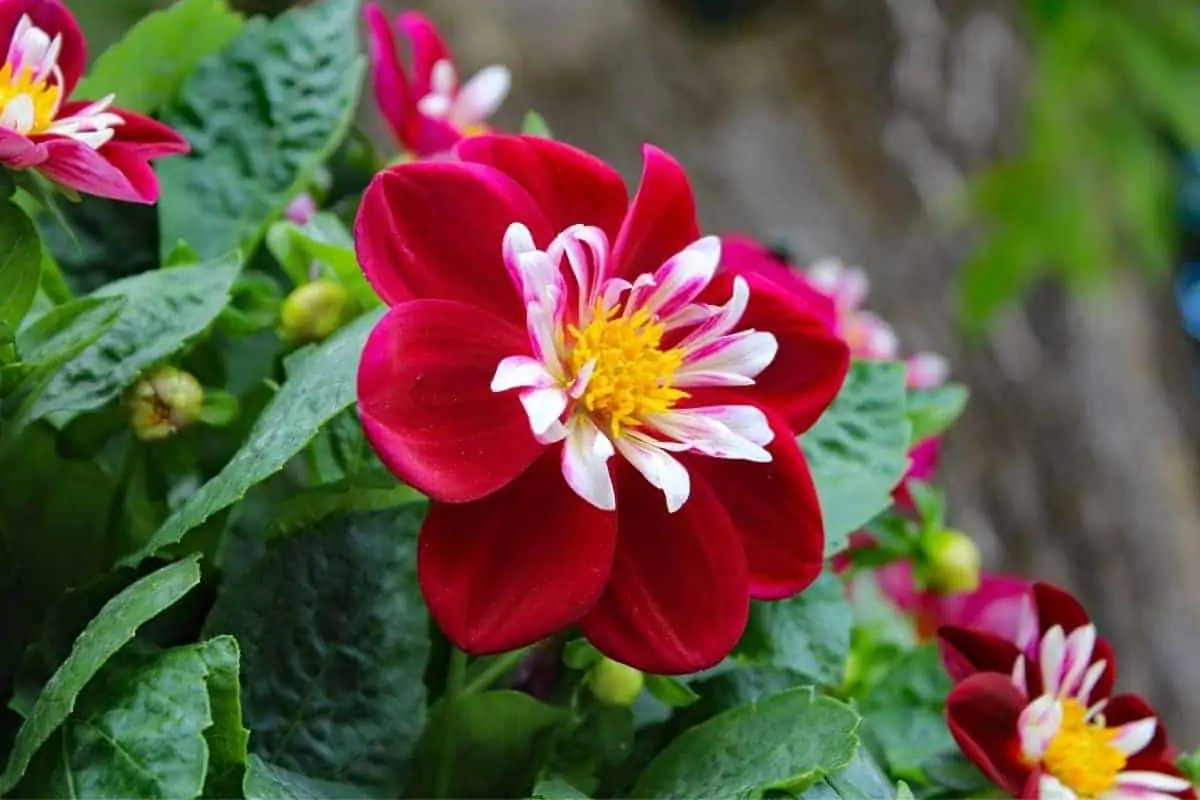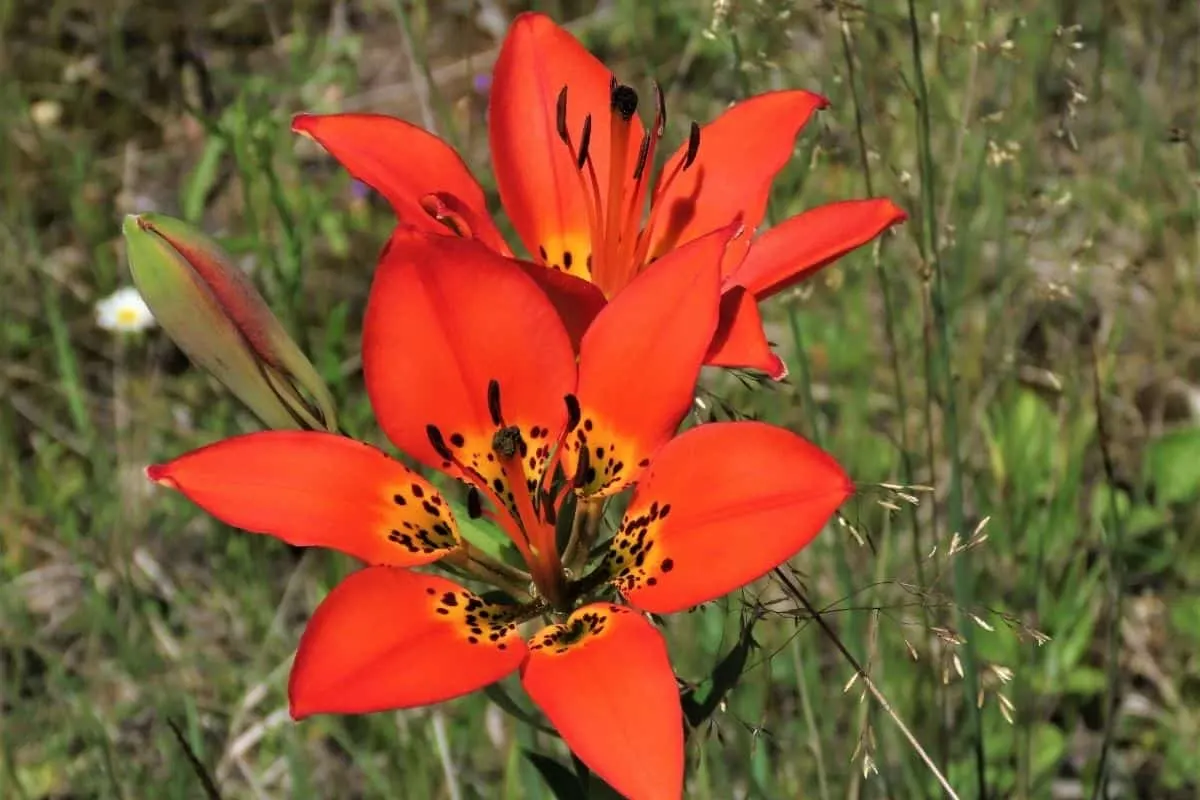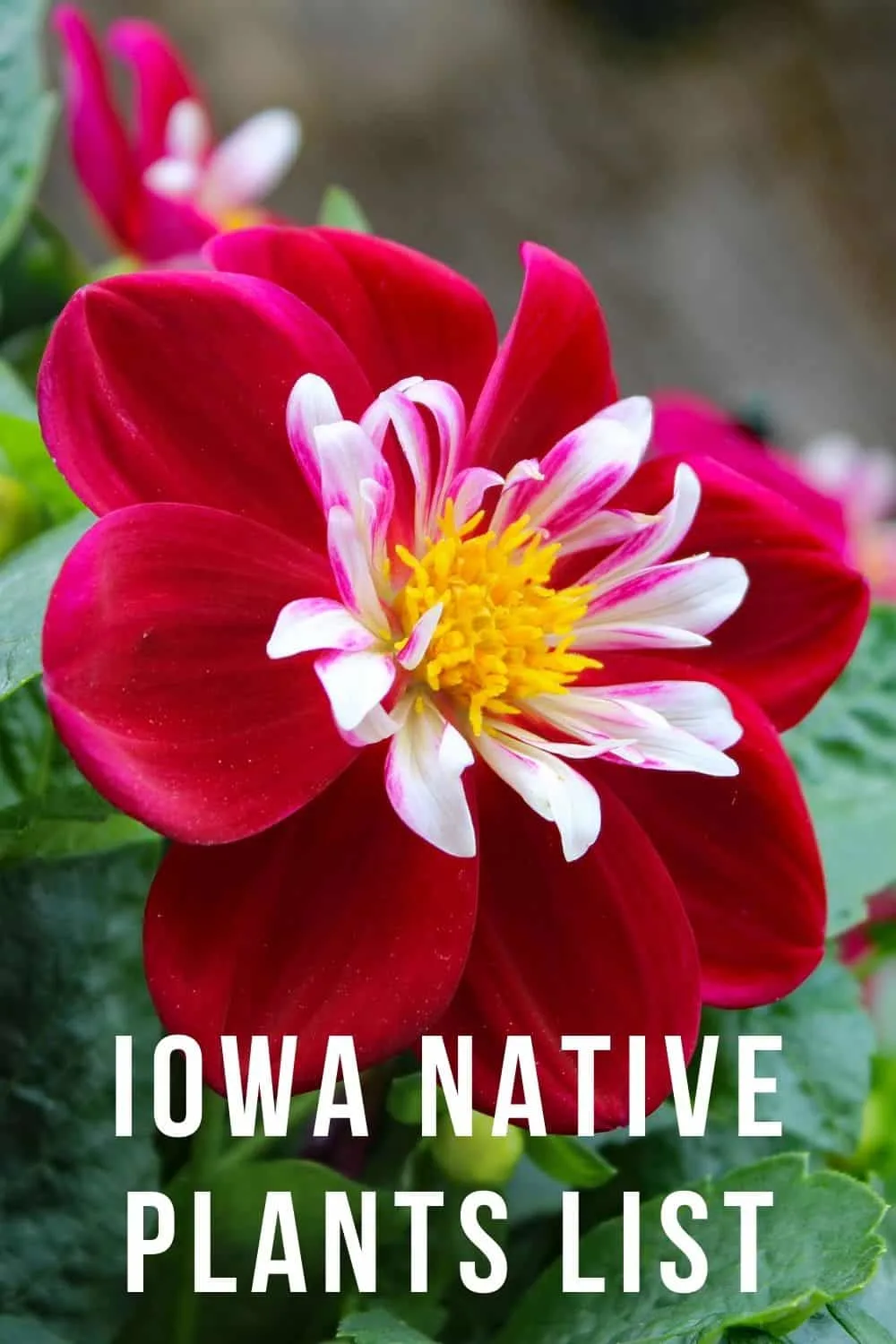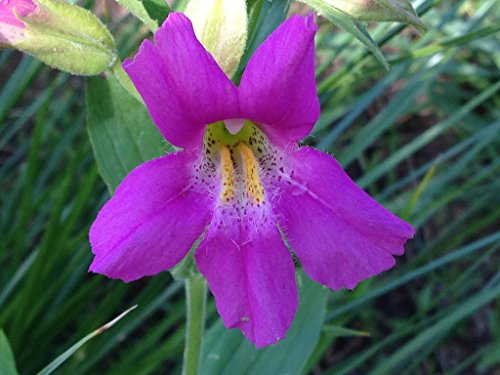When you’re looking to design a beautiful flower garden that will attract butterflies, honeybees, and other native wildlife, you need to choose native flowers. These will be the most well-adapted to the unique climate of Iowa so they can withstand weather, pests, and more.
Our Iowa native plants list is meant to get you started on the right track but if you want to learn more, or ask questions about your specific lawn or garden, getting the help of a professional from a local nursery might be a good place to start. They will have the best knowledge about what is available to you and how to make the best of the natural conditions in your landscape. Let’s explore this a bit more.

Iowa’s Climate and Benefits to Native Plants
Iowa has a standard, four-season climate. This is mostly due to the state’s middle position within the continent itself. The winters are cold and dry, with lots of wind and the summers are long, warm, and humid. While the state does get some snow in winter, it’s usually lighter than the amount in states more to the north and east of Iowa.
Because of this, it hosts a variety of native plants and wildlife. Agriculture has pushed out much of the state’s native prairie and wetland vegetation, but these species can still thrive in a controlled environment, such as a garden or landscape.
Naturally, the woodlands areas thrive along rivers and hill parts of the state where you will find ash, elm, and hickory trees to name a few. Understanding the zone and climate where you live will help you choose flowers that do the best, require the least amount of upkeep, and bloom longer and more beautiful for you to enjoy.
Here are some native plants to Iowa that you can consider for your garden:
1. Yarrow (Achillea millefolium)
Sometimes just called common yarrow, or old man’s pepper, this flowering plant grows to about 1-3 feet tall and up to 1 ½ feet wide. It grows upright and fast, making it great for establishing a new garden or ground cover. It has a pleasant fragrance that also attracts native insects and bees.
Yarrow supports bees, butterflies, and birds in the local ecosystem. The white or yellow flowers bloom in the spring and summer.
2. Sweet flag (Acorus calamus)
Next on our list is the sweet flag. Another perennial that grows about 1-3 ½ feet tall, this low-maintenance plant is another good choice for your Iowa native garden. It has tufts of basal leaves that put off a nice, sweet smell, lending to its common name. Sometimes it is also called muskrat root. This flowering plant has psychoactive chemicals and was long ago used in natural medicine.
3. Columbine (Aquilegia canadensis)
Columbine is another good choice for your garden when going native. This perennial grows up to 2 feet tall, has beautiful, red and yellow, showy flowers that really make any landscape pop, and it’s perfectly shaped for hummingbirds or long-tongued insects to get to the nectar. Columbine likes loamy or sandy soil, dry to medium water, and full sun or partial shade. The showstopper blooms happen from May to June.
4. Wild ginger (Asarum canadense)
Wild ginger is a low, colony-forming perennial. They grow only to about 4-8 inches high, making them a good ground cover or filler plant in the garden. They have large, velvety, heart-shaped leaves making them easy to distinguish among other greenery.
It can bloom a pretty red flower in the early spring, but they are often hidden behind the foliage. It does well in partial shade, with clay, loam, or sandy soil. Wild ginger makes a great host plant.
5. Butterfly milkweed (Asclepias tuberosa)
Butterfly milkweed is one of several species of milkweed native to Iowa. It is commonly known as butterfly weed because it is such a favorite to the native butterflies who are attracted to both its colors and the large production of nectar. This bushy perennial grows from about 1 ½ – 2 feet tall and has large, clusters of prized flowers.
The orange and yellow flowers bloom from May to September.
6. Blue false indigo (Baptisia australis)
This large, brush-like perennial has deep clusters of blue flowers that grow on long, upright spikes. They are very beneficial to pollinators like native hummingbirds and bees, and they are also deer resistant. Blue false indigo likes clay or sandy soil, medium moisture, and full sun or partial sun.
They can grow from 3-5 feet, making them stand out in a garden of smaller or shorter flowers. The purple or blue flowers bloom in June and July, allowing for more summer pollination.
7. Purple coneflower (Echinacea purpurea)
Coneflower is like a staple in the Midwest and Iowa is no exception. This popular perennial grows from 2-5 feet tall and blooms with striking, long-lasting lavender or purple flowers. Sometimes flowers can also have a pink color to them. They bloom from April to September, so they are a perfect choice for a native flower garden that stays beautifully colored for much of the year. They require medium water and sun or part shade. A well-drained, sandy, or dry soil is best.
Take note that purple coneflower can spread quickly and even become aggressive in certain conditions.
8. Blue flag iris (Iris versicolor)
Blue flag iris has many common names such as harlequin blueflag, larger blue flag, northern blue flag, and poison flag. It thrives in zones 3-9 and grows up to about 2 ½ feet, with a spread about the same. The beautiful blue/violet flowers bloom from Maye to June. This plant prefers sun to part shade and medium to wet soil. It’s low maintenance once established but can fall susceptible to certain insect pests like aphids.
9. Prairie lily (Lilium philadelphicum)

Prairie lily is sometimes also called wood lily or western red lily. This perennial is a smaller member of the lily family, but the flower is just as striking as other varieties. It grows only about a foot in height and the funnel-shaped, red-orangish petals have brown spots near the base.
The nectar and pollen of prairie lily will attract bees, hummingbirds, and larger butterflies like monarchs or swallowtails. This alone is a great reason to add them to your garden. They bloom from July to August.
10. Monkey flower (Mimulus ringens)
This is a species of money flower sometimes called Allegheny monkeyflower or square-stemmed monkeyflower. It’s an upright perennial that does best in zones 3-8. It grows from 1-3 feet high and can spread up to a foot. The lilac-colored flowers bloom from June to September. It’s low maintenance, looks great, is deer resistant, and does best in moist to wet soils near water gardens, bog gardens, or wet meadows.
11. American lotus (Nelumbo lutea)
This species of flowering plant that loves aquatic areas is also called yellow lotus, water-chinquapin, and volée. The pale-yellow flowers are very fragrant, and the bowl-shaped leaves grow on stalks above the water. This is part of the water lily family and does require high water and full sun to thrive. This could be a perfect addition if you have a pond or water feature in your garden.
12. Water lily (Nymphaea)
Like the American lotus, the water lily is a good choice if you have water in or near your garden. This hardy aquatic plant blooms beautiful white or pink flowers with a pleasant fragrance. The flowers and green leaves float on top of the water. They bloom from March all the way to October, giving you long-lasting blooms to enjoy. Water lilies also attract birds.
13. Jacob’s ladder (Polemonium reptans)
This perennial herb has a bright, showy flower that makes it stand out in other greenery. It grows best in zones 3-8 and at maturity is around 1- 1 ½ feet tall with an equal spread. The blue flowers bloom from April to June and require full sun to some partial shade.
Jacob’s ladder likes moist but well-drained soil. It has no serious insect or disease problems and is fairly low maintenance once it is established in your garden.
14. Mountain mint (Pycnanthemum virginianum)
Mountain mint will attract many insects to the white flowers that bloom, such as bees, wasps, flies, and small butterflies. As the name suggests, it’s part of the mint family, and when the leaves are crushed, it has a strong minty odor. The white flowers sometimes have purple spots or a very light purple tint to them. It’s very pretty to look at and low maintenance to care for.
15. Wild petunia (Ruellia humilis)
Wild petunia is often grown as an ornamental plant, and it will look great in your garden or landscape. This prairie native is deer-resistant, and isn’t actually a petunia at all, although it looks like one. It’s great for a ground cover, near a sidewalk, or a border to help contain it. It will attract a lot of pollinators and it pairs well with other native prairie plants.
16. Golden Alexanders (Zizia aurea)
And last but not least on our list is golden Alexanders. They have a long bloom time which makes them a favorite for flower gardens since you can enjoy the brightly colored blooms from April to June and sometimes even a bit longer. They like full or partial sun and a medium-wet to medium soil. They can grow about three feet tall, and the yellow blooms grow in little clusters at the tops of the stalks. Swallowtail caterpillars love to feed on their leaves.
Now that you know about these great flowers, let’s look at some other important things to know about Iowa native plants.
Iowa native plants list FAQ
Here are some commonly asked questions about native flowers in Iowa, native gardens, or other native plants to the area.
Where can I buy native plants in Iowa?
If you’re looking to buy native plants in Iowa for your garden or landscaping needs, a local nursery is going to be your best first choice. The Iowa Native Plant Society has a lot of resources and information, including links to other native plant societies and nurseries for native plants in Iowa, organized based on their regions or types. You can search based on trees, flowers, specialized groups, prairie-focused, herbaria, botanical gardens, and more. They also have resource lists for where to view native Iowa plants in the wild within the state.
Does lavender grow in Iowa?
Maybe you’ve heard of lavender in Iowa and you’re wondering if it’s really a great place to find it natively. Lavender does wonderfully in dry, well-drained soil that is sandy or gravelly and it likes full sun. This is why you can find it naturally in the Loess Hills area. Lavender also needs good air circulation and little or no fertilizer. It’s a woody perennial that grows best in hardiness zones 5-8S/10W.
How do I start a new native garden?
If you are excited about the information in this post and you want to start your own native garden, where should you begin? The first step is to learn as much as you can about the site you plan to plant on. Then, you can build your garden around the site. Seek the help of a local expert, if needed. Then you can match your plant choices to your landscape, based on how much sun or shade it gets, the soil type, and other conditions. You may also group similar plants together, creating a focal point in the garden. Consider scale when planting and think about how the plants will grow into maturity so that you can keep everything in balance and define your space.




















 ?. ts.dhung.
?. ts.dhung.
